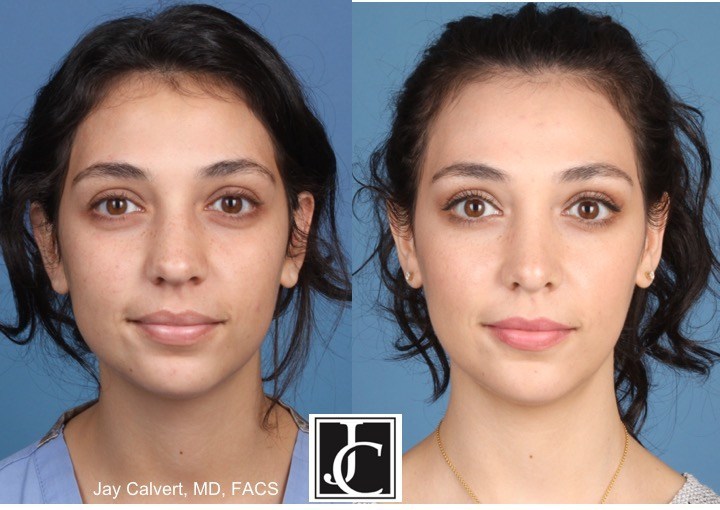4 Easy Facts About Rhinoplasty Austin Described
Table of ContentsSome Known Details About Rhinoplasty Austin Some Known Details About Rhinoplasty Austin What Does Rhinoplasty Austin Do?About Austin Rhinoplasty
Ultrasonic nose job utilizes piezoelectric instruments (scrapers rasps, saws) that impact just the bones and the stiff cartilages through ultrasonic vibrations, as the instruments used in oral surgery. Using piezoelectric instruments needs a more extended approach than the isial one, permitting to picture the entire bony vault, to improve it with rhinosculpture or to set in motion and support bones after regulated osteotomies.Normally, the cosmetic surgeon first separates the nasal skin and the soft tissues from the osseo-cartilagenous nasal structure, and then improves them, stitches the cuts, and uses either an external or an internal stent, and tape, to debilitate the newly rebuilded nose, therefore assist in the healing of the surgical cuts.

To tape-record the "before-and-after" physiognomies of the nose and the face of the client, the particular visual viewpoints required are pictures of the nose seen from the anteroposterior (front-to-back) perspective; the lateral view (profiles), the worm's- eye view (from below), the bird's- eye view (overhead), and three-quarter-profile views. Photograph A. Open nose job: At nose surgery's end, after the cosmetic surgeon has sutured (closed) the cuts, the remedied (brand-new) nose will be dressed, taped, and splinted stable to allow the uninterrupted healing of the surgical cuts.
Photograph B. Open rhinoplasty: The new nose is prepared with paper tape in order to get the metal nasal-splint that will incapacitate it to maintain its right shape as a brand-new nose. Photo A. Open nose surgery: Pre-operative, the guidelines (purple) made sure the cosmetic surgeon's precise cuts in cutting the nasal flaw correction plan.
All about Rhinoplasty Surgery Austin

Open nose surgery: After the initial taping of the nose, a personalized, metal nasal-splint, created, cut, and formed by the cosmetic surgeon, is emplaced to immobilize and protect the tender tissues of the new nose throughout convalescence. Photo D. Open nose job: The taping, emplacement of the metal splint, and dressing of the new nose complete the rhinoplasty procedure - rhinoplasty surgery austin.
Photograph 2. Open nose surgery: The right lower lateral cartilage (blue) is exposed for correction. Photo 1. Open rhinoplasty: The columellar cut delineated as a red-dot standard, will assist the surgeon in the exact suturing of the nose. Photo 4. Rhinoplastic correction: A nasal-hump excision plan; the black line defines the dorsal plane of the brand-new nose.
Open nose job: the nasal tip is sutured to narrow the nose. Photo 1. Open rhinoplasty: The incisions are endonasal (in the about his nose), and thus are concealed. The skin-incision to the columella aids the plastic cosmetic surgeon in specifically suturing to conceal the scarother than for the columellar cut (red-dot standard) throughout the nasal base.
Photograph 2. Open nose surgery: The nasal interior. The scissors show the lower lateral cartilage (blue), which is among the wing-shaped cartilages that adhere the idea of the nose. The jagged red delineation indicates the place of the columellar cut. Once the skin has been raised from the bone-and-cartilage framework, the surgeon carries out the nasal correction tasks.
Our Austin Rhinoplasty Ideas
Open nose job: To narrow the suggestion of a too-wide nose, the cosmetic surgeon first figures out the cause of the excess nasal width. The stitch being emplaced will narrow the pointer of the nose. The red delineation indicates the edge of the nose-tip cartilage, which is narrowed when the cosmetic surgeon tightens the folded cartilage pinnacle.
Photo 4. Nasal hump excision: The black delineation shows the preferred nose-reduction result: a straight nose. The nasal hump is bone (red) above the scalloped grey line, and cartilage (blue) below the scalloped grey line. The surgeon cuts the cartilage portion of the hump with a scalpel, and chisels the bone part with an osteotome (bone chisel).

Although a lot of revision nose surgery treatments are "open approach", such a correction is more technically made complex, generally since the nasal assistance structures either were warped or damaged in the main rhinoplasty; therefore the cosmetic surgeon must re-create the nasal assistance great post to read with cartilage grafts harvested either from the ear (auricular cartilage graft) or from the rib cage (costal cartilage graft).
In reconstructive rhinoplasty, the problems and defects that the cosmetic surgeon encounters, and must restore to regular function, kind, and look consist of broken and displaced nasal bones; disrupted and displaced nasal cartilages; a collapsed bridge of the nose; genetic problem, trauma (blunt, permeating, blast), autoimmune condition, cancer, intranasal drug-abuse damages, and failed primary rhinoplasty results.
The Ultimate Guide To Austin Rhinoplasty
When cartilage is interrupted, suturing for re-suspension (structural assistance), or using cartilage grafts to camouflage an anxiety enable the re-establishment of the regular nasal contour of the nose for the client. When the bridge of the nose is collapsed, rib-cartilage, ear-cartilage, or cranial-bone grafts can be utilized to restore its anatomic stability, and therefore the aesthetic connection of the nose.